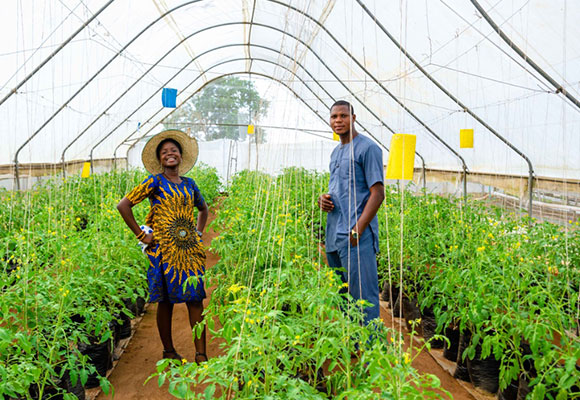By Atunlute Isaac
As traditional farming methods face mounting threats from climate change and urbanisation, a novel system now offers salvation—soilless farming. Imagine cultivating succulent strawberries, crisp lettuce, or plump tomatoes without getting your hands soiled.
Soilless agriculture has emerged as an innovative response to the threats that have blighted conventional farming and weakened food security in the world over the years. It’s, in fact, prominent in countries such as Dubai, Singapore and Kenya.
In this farming method, crops are grown in nutrient solutions, such as a substrate like coco peat or rock wool, within a controlled environment. A process known as hydroponics allows crops to flower with less chemical and water.
Soilless planting offers an efficient and clean farming alternative to traditional farming, particularly where land is in short supply.
Hydroponics, which is one of the main components of soilless farming, saves up to 90% of water compared with soil cultivation and is suitable for water-stressed regions.
Its controlled environment allows for fewer pests, hence limiting the use of pesticides and healthier crops. Vertical farm modules, roof gardens, and indoor arrangements with the help of LED grow lights, all built over soilless beds, can also provide services to urban agglomerations with negligible space.
Farmers in Nigeria, even across Africa, have begun adopting soilless farming for higher food production, reduced logistic costs, and fresh products for consumers.
The methodology is not without its constraints, though. The innovative method of farming entails huge startup capital for pumps, nutrient mixers, monitoring devices, and electricity. Training is another concern since precision is needed to administer the nutrients, monitor pH, and regulate light.
Yet experts are convinced that its challenges pale in comparison to its long-term returns—higher growth cycles, increased yields, and the possibility of growing crops year-round irrespective of season or soil.
Institutions such as Covenant University and Soilless Farm Lab are among the top organisations blazing the trail in Nigeria, pioneering research and development in this novel system.
As food productivity declines persistently across the world, soilless farming provides a guarantee for not only more food but also for a sustainable planet.
Soilless farming offers a modern solution to challenges faced by traditional agriculture due to climate change and urbanization. This innovative approach, employed in countries like Dubai, Singapore, and Kenya, allows crops to be grown in nutrient-rich solutions without soil, using a controlled environment known as hydroponics. Benefits include significant water savings, reduced pesticide usage, and adaptability to urban settings with limited space. While the method requires substantial initial investment and expertise, its advantages include year-round crop production and higher yields, with institutions like Covenant University leading research in the field. Despite some challenges, soilless farming holds promise for enhanced food security and sustainability globally.






